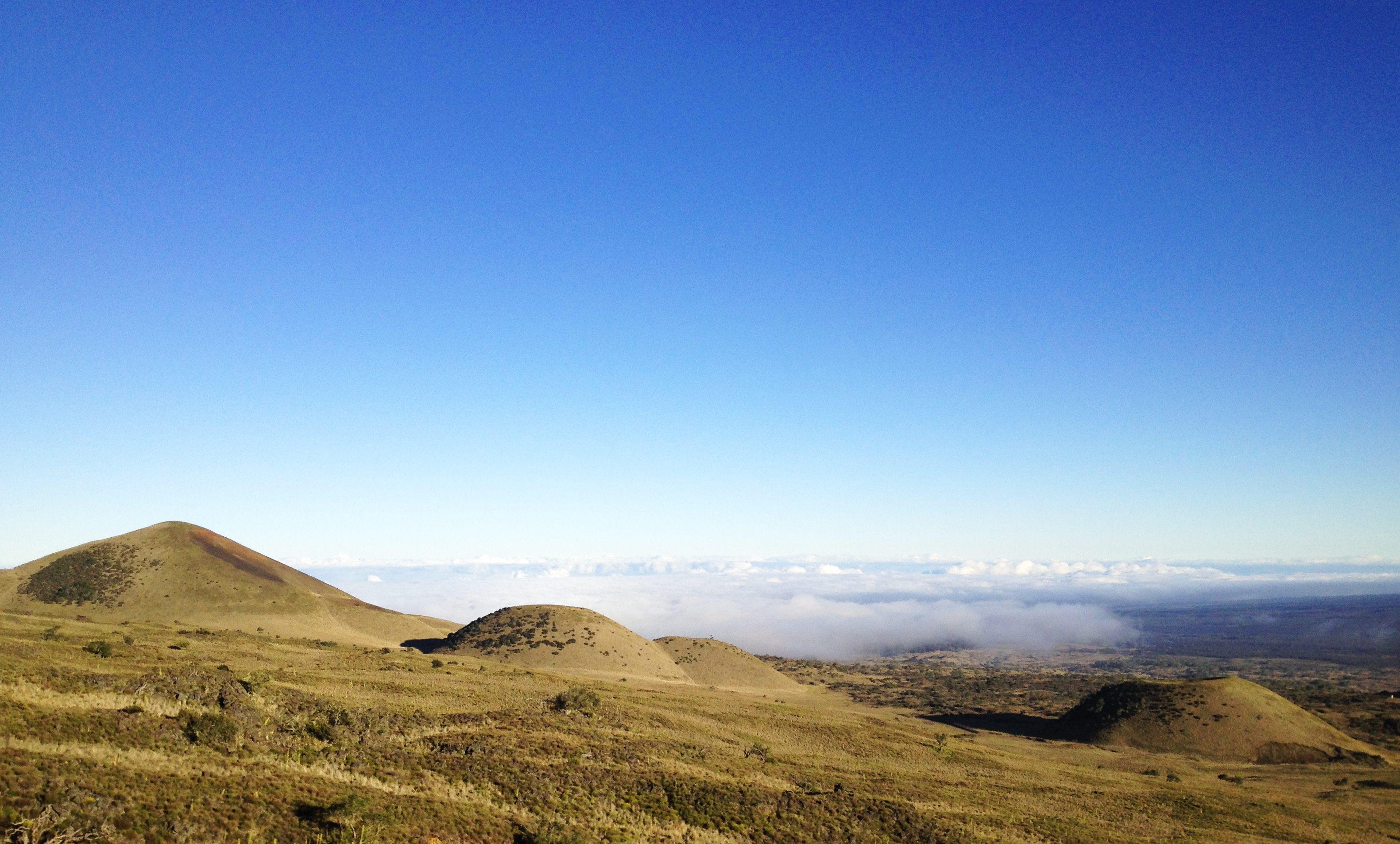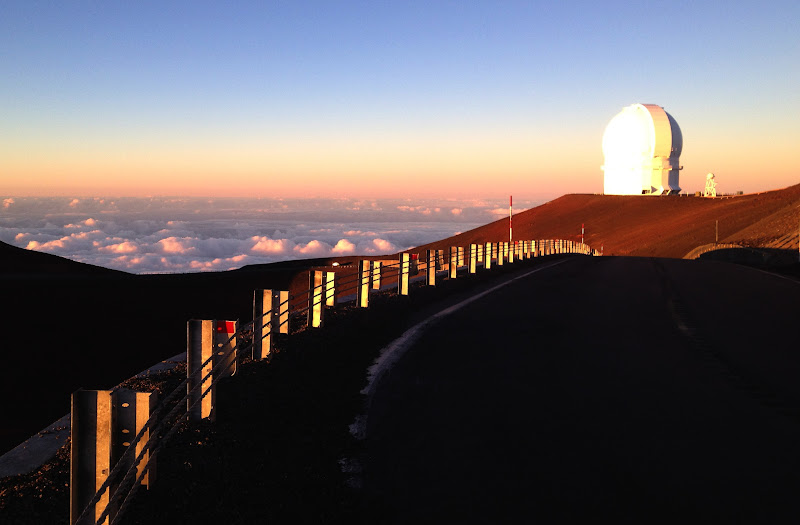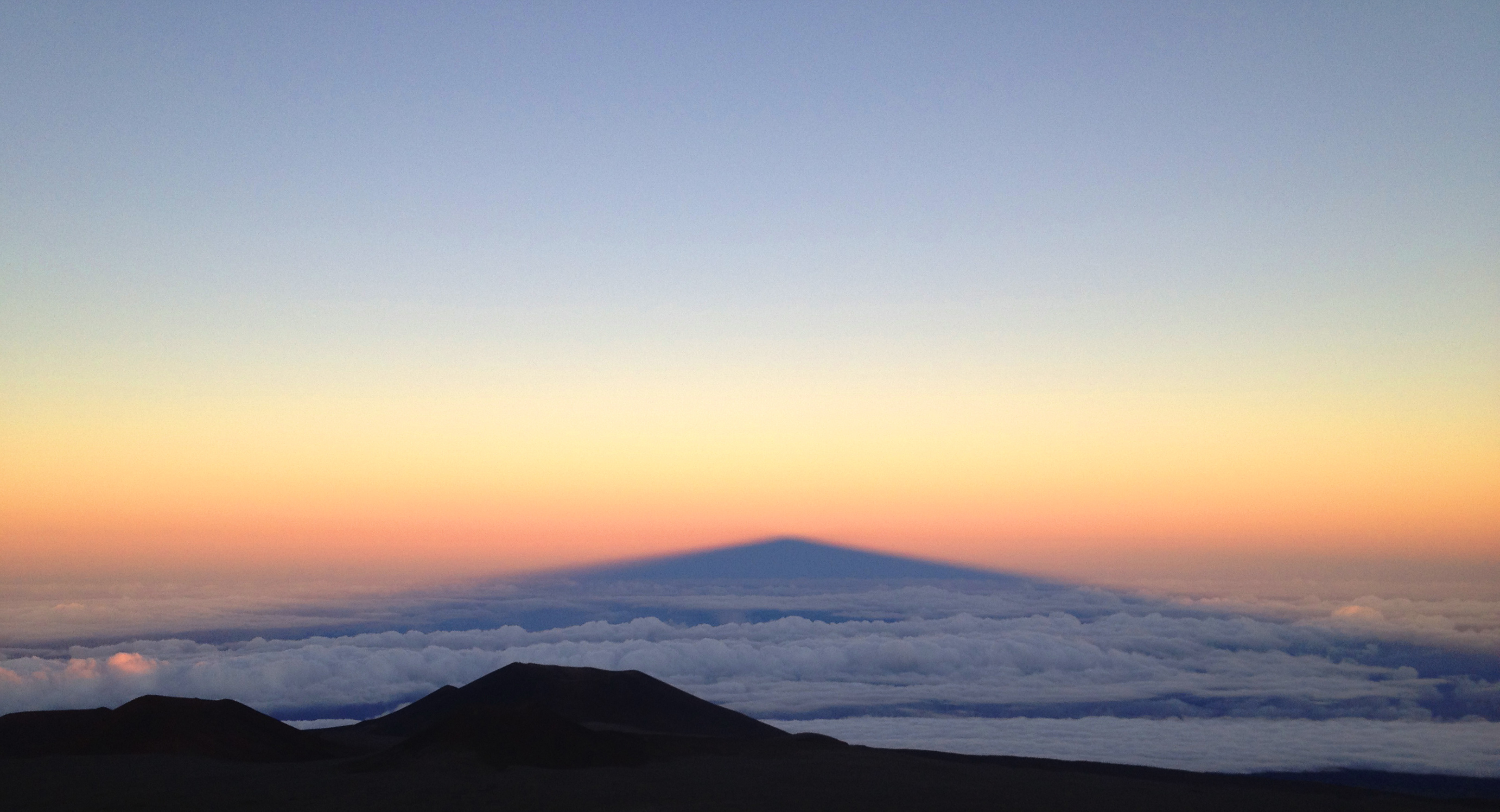Mauna Kea, Big Island
Our destination is the peak of Mauna Kea, 13000 ft above sea level. The drive from sea level to 13000 ft takes about 3 hours. During the drive up, I could feel the change in air pressure. I kept moving my jaw to get that satisfying ‘pop’ in my ears.

Passing the clouds on the way up Mauna Kea
We were climbing so high soon we were above the cloud cover. It was grey and overcast in Kona when we left. Up here it’s like a perfect winter day in San Francisco. And just as windy and cold.

Cinder cones on the flank of Mauna Kea
The summit of Mauna Kea is one of the best spots on the world for astronomical observations: the air is dry and there’s little disturbance in the atmosphere. There are currently 13 observatories, a cluster of helmet-clad sentinels guarding the summit of the sacred mountain.
During sunsets, their silhouettes stand out against the brightly painted sky.
Mauna Kea sunset, Big Island, Hawaii

Mauna Kea observatory, Big Island, Hawaii
Jack and I made a run up the actual peak of Mauna Kea, pausing often for breaths. The air is much thinner and colder here. As we reached the peak, we wrapped our parkas just a little bit tighter around us.
We got up there just in time to see the sun set for the day.
It’s beautiful up here above the cloud covers with puffy clouds stretching in front of us as far as the eyes can see. It’s the kind of view one usually sees from inside an airplane.
10 years ago, catching sunset at Mauna Kea was one of the highlights of my visit to Big Island.
(MORE: Chasing Lava)
I’m glad that despite the changes the island has gone through, some things remain the same.

The shadow of Mauna Kea peak on the clouds down below
Info Box
You can drive all the way up to the peak of Mauna Kea. 4 wheel vehicles recommended. As an alternative, Hawaii Forest and Trail runs tours up the peak which includes a stop at the Visitor Center to stargaze with their 11 in telescope.




Questions and Comments
Comments are disabled. If you have any questions about the post, you can DM me on Instagram: @jacknjilltravel.